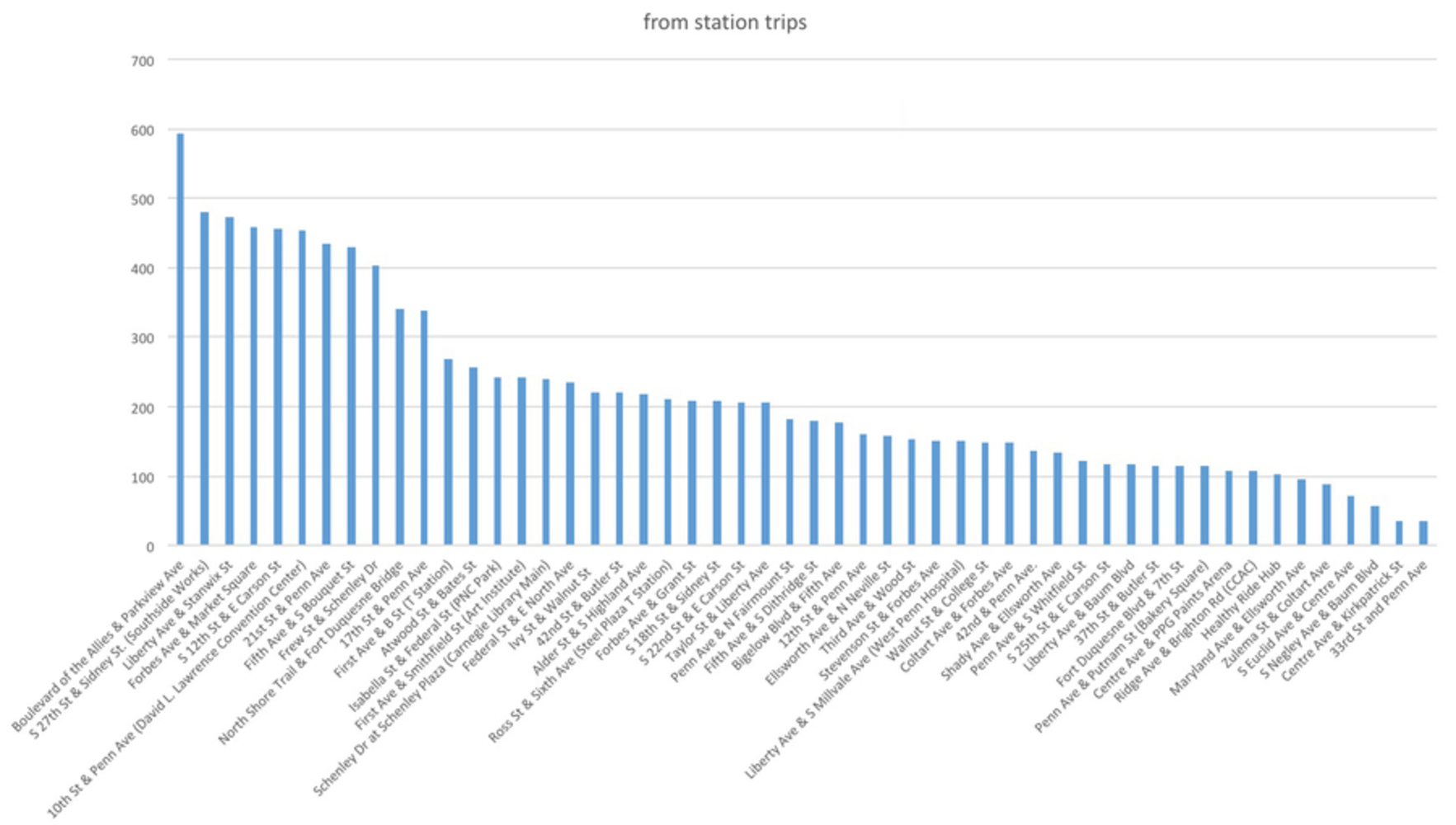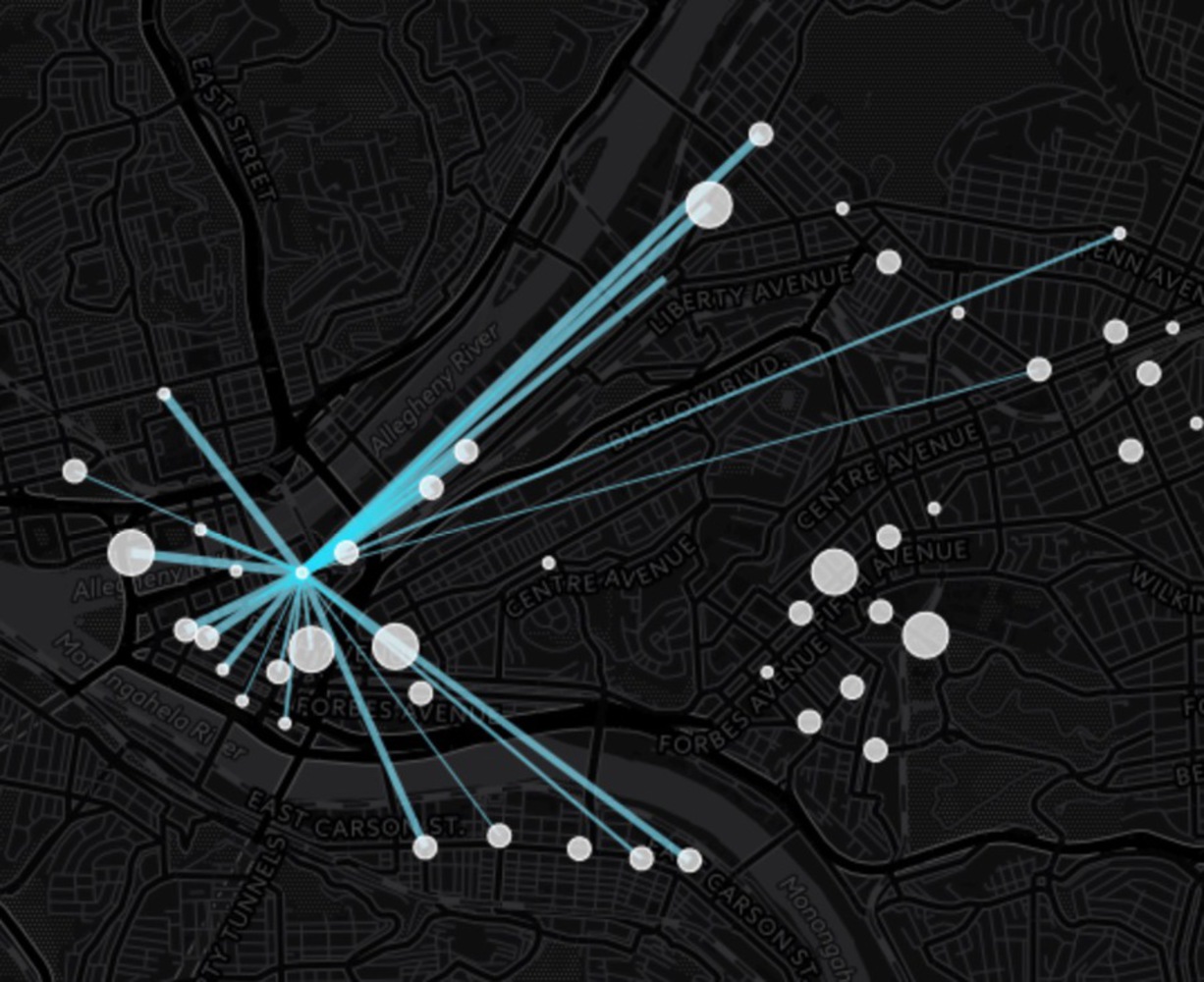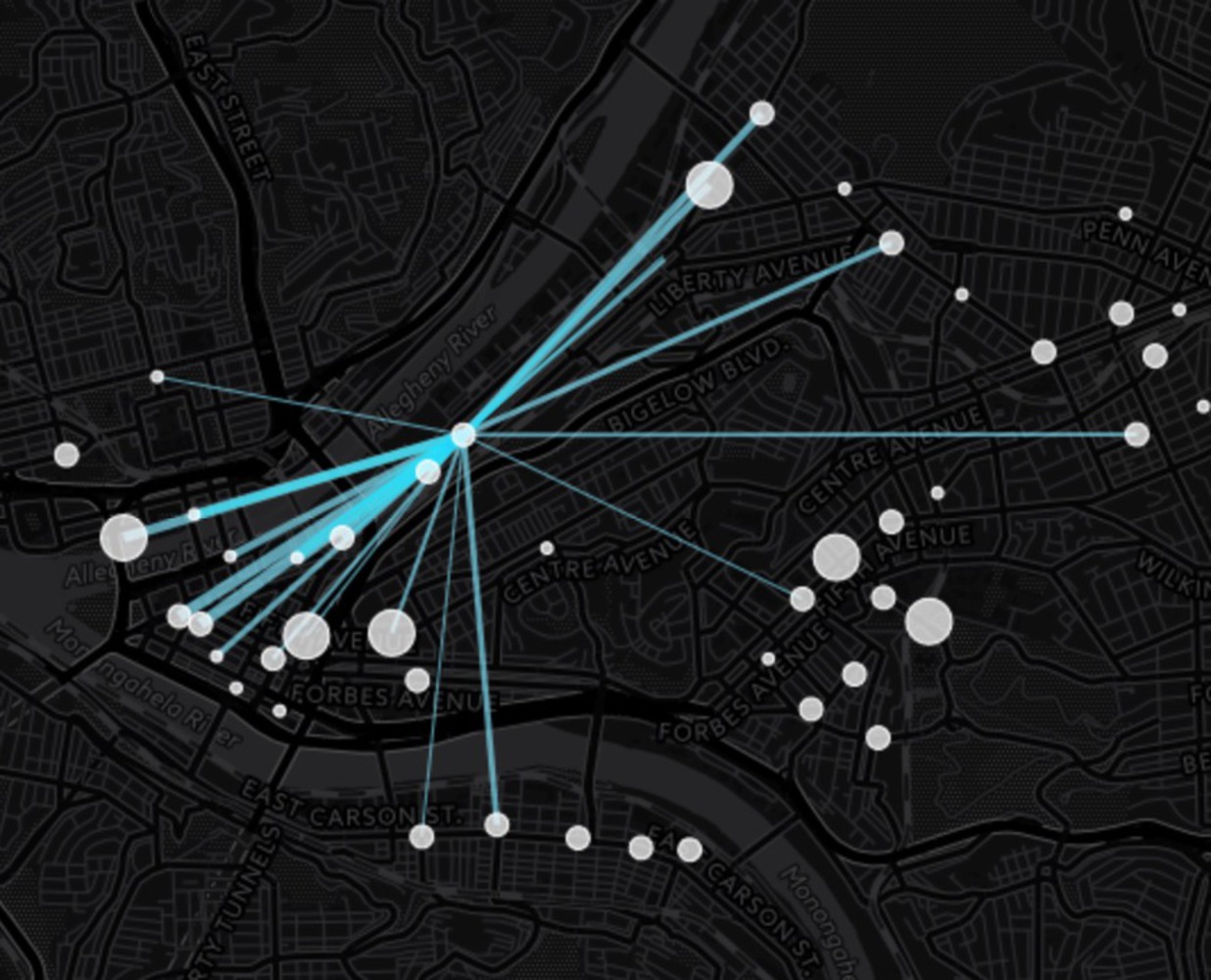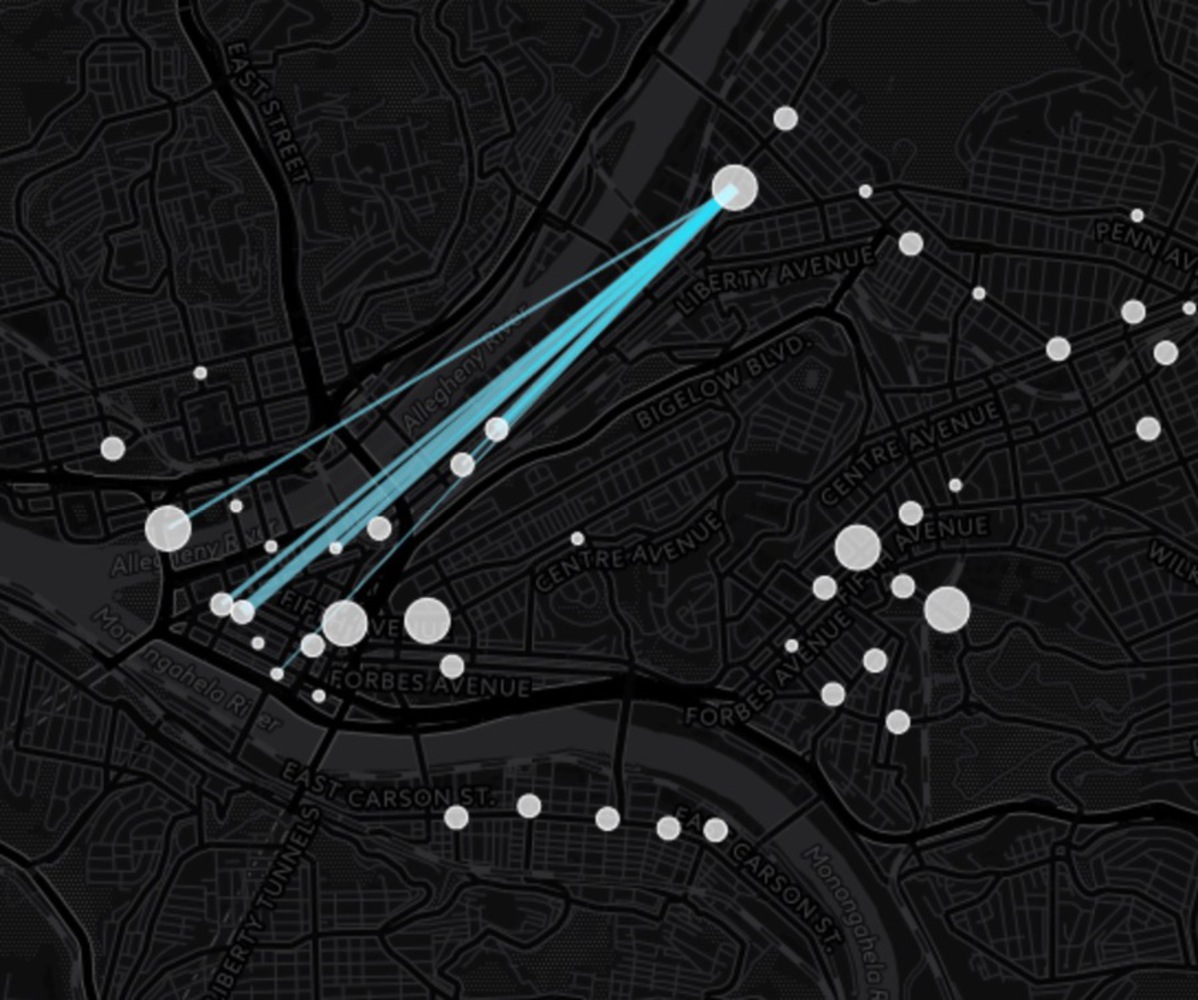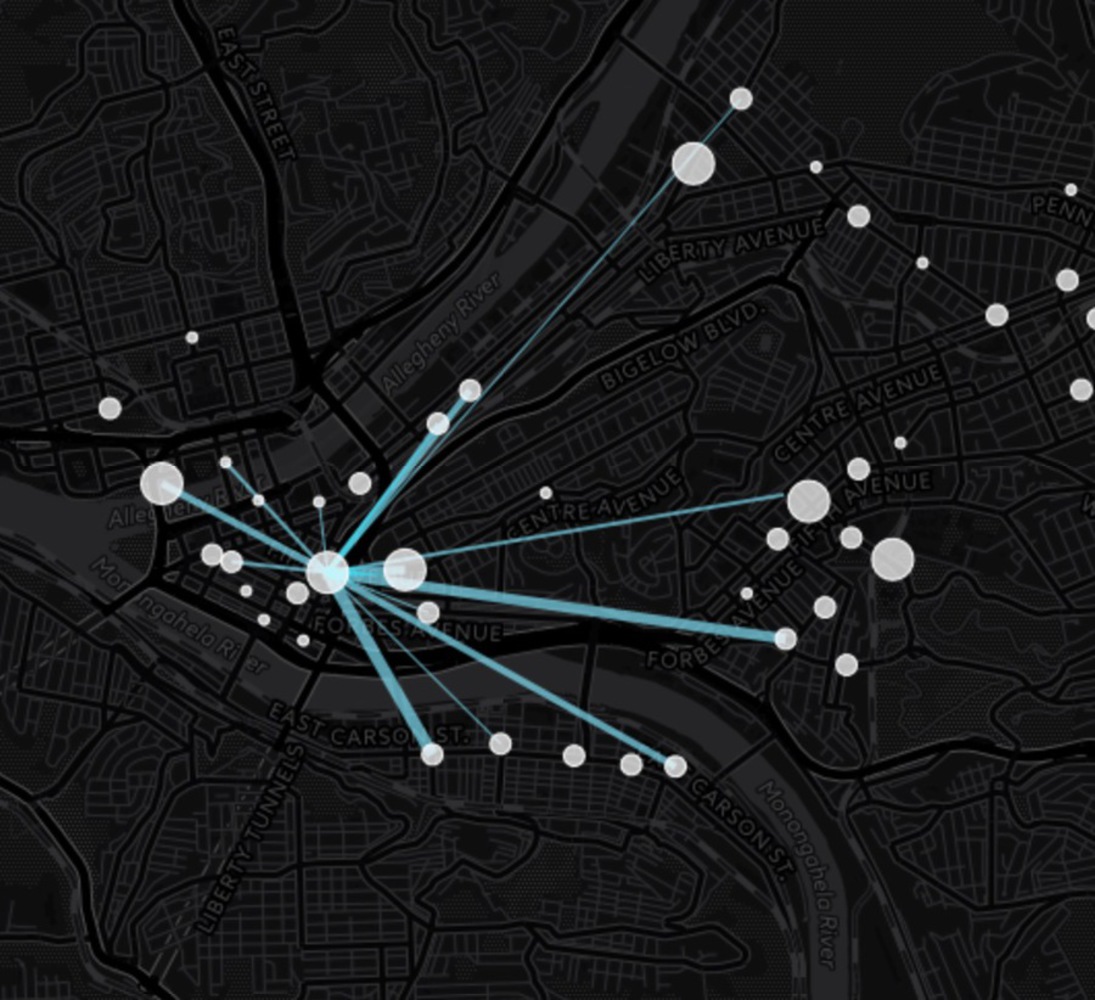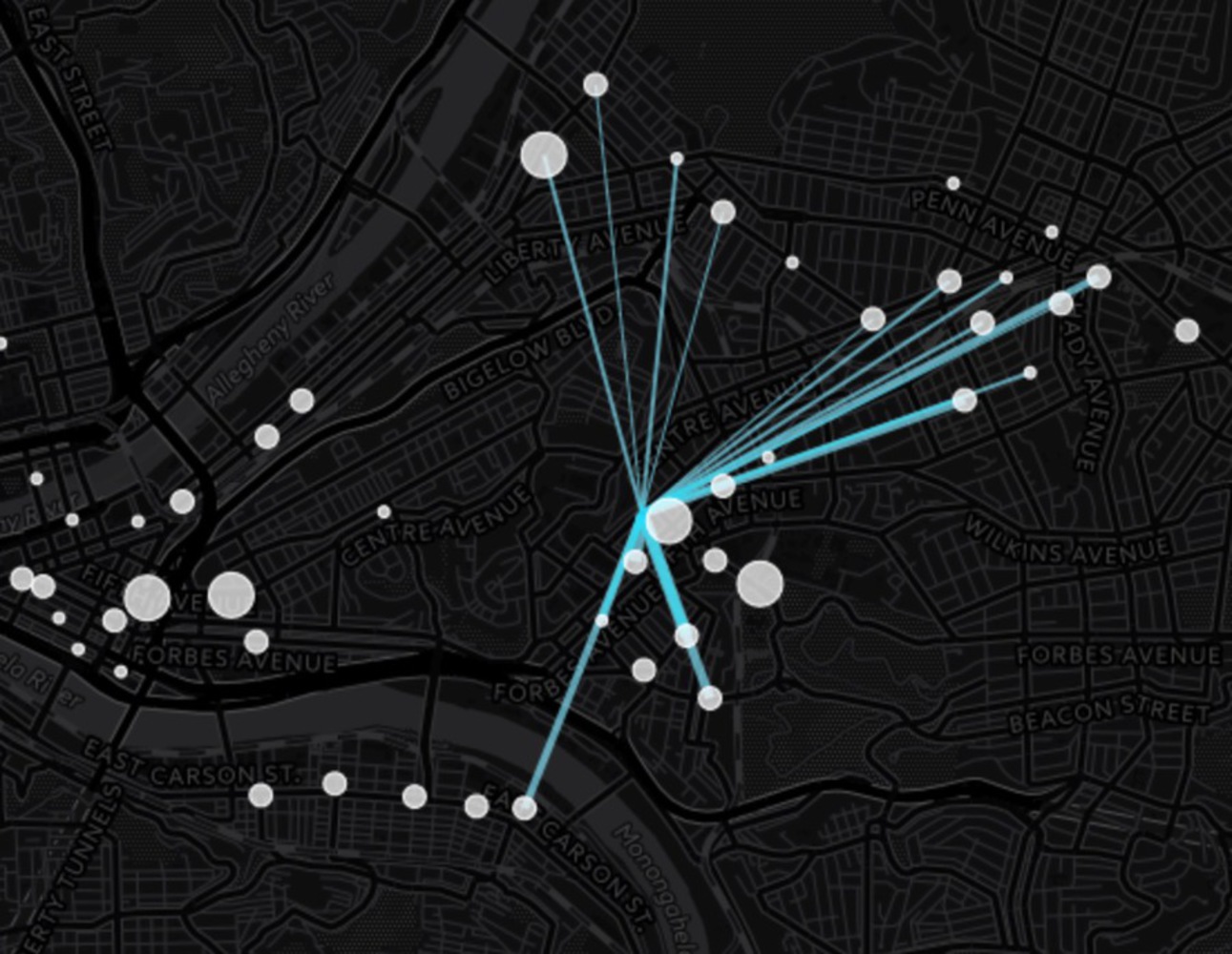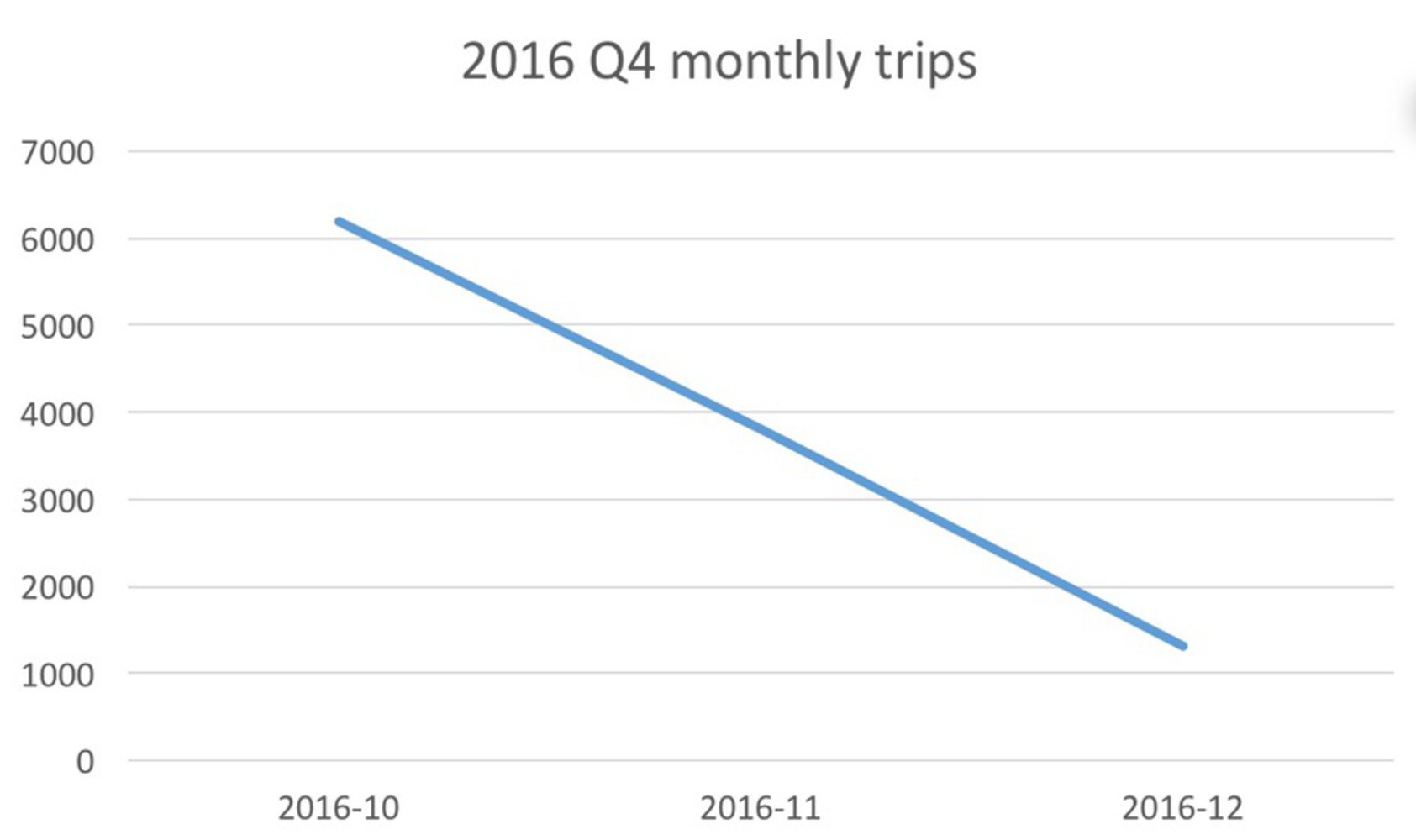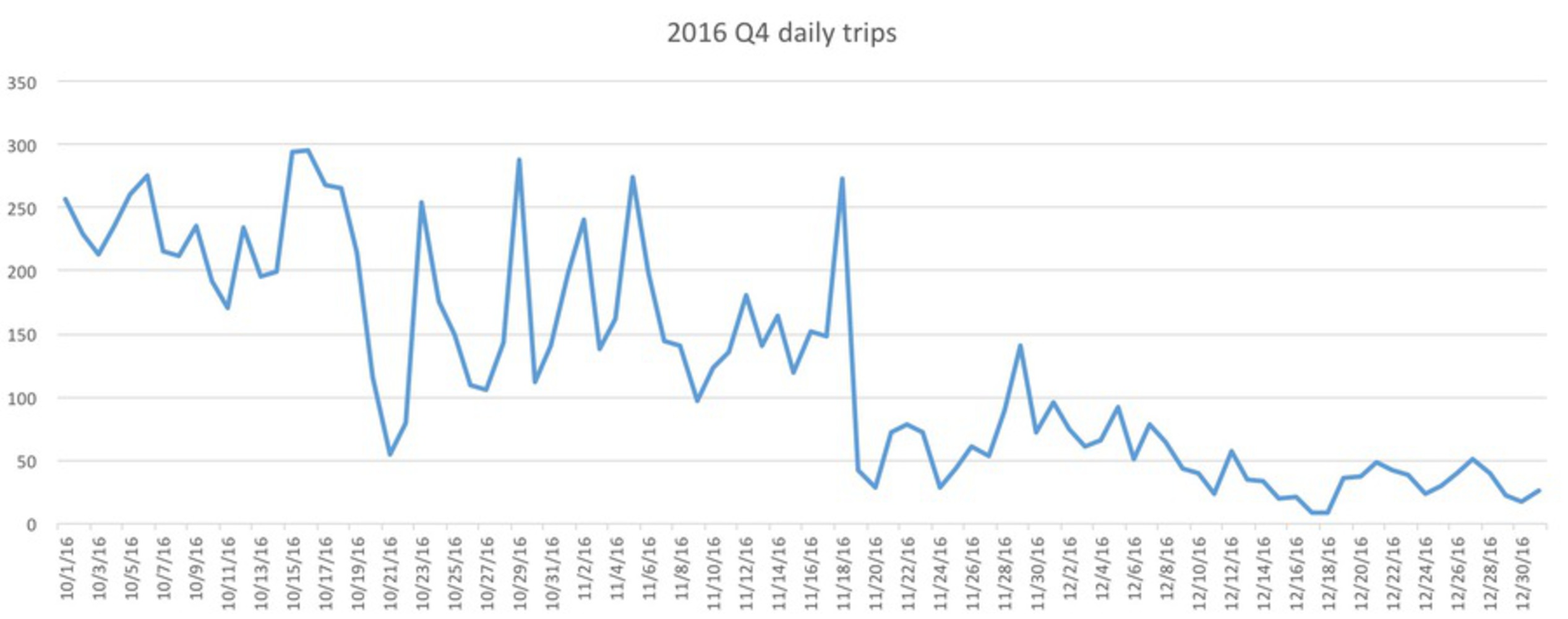Dataset
I used datasets made available by the Western Pennsylvania Regional Data Center (WPRDC) for the Healthy Ride Trip Data. Available at https://data.wprdc.org/dataset/healthyride-trip-data. Our dataset ranges from 1st October 2016 to the 31th December 2016 and includes 11,324 trips taken from 466 bikes from 52 stations in the Pittsburgh region. On average a trip lasted 46 minutes with a maximum length of 1.92 days and the shortest ride lasting just 60 seconds.


